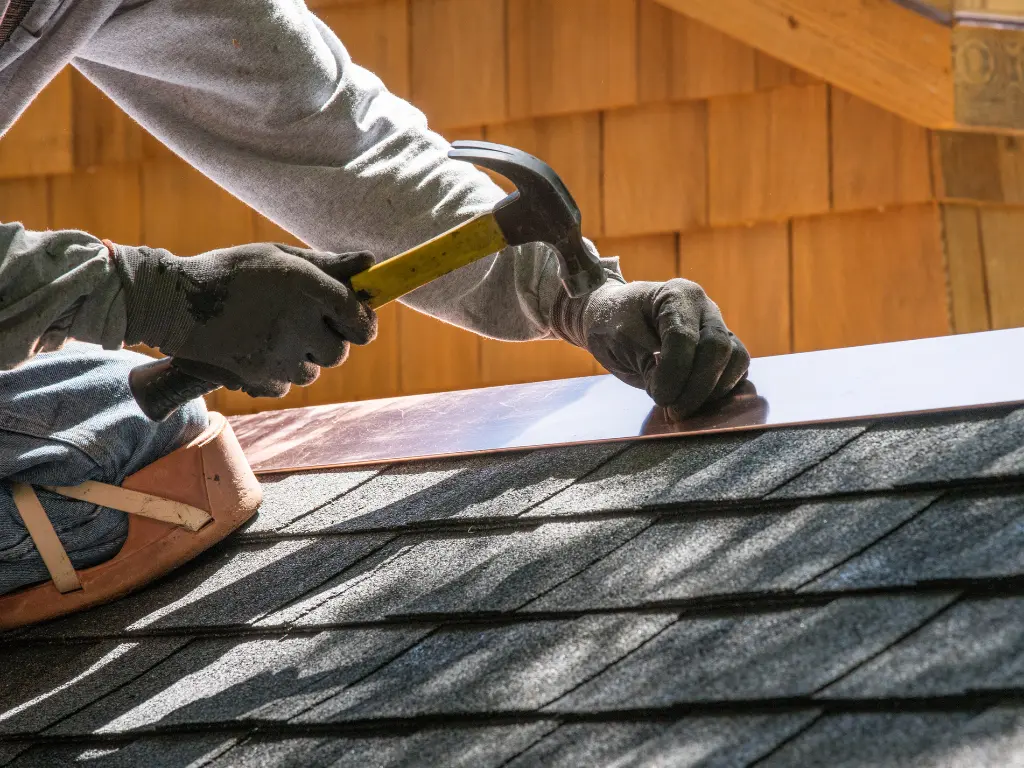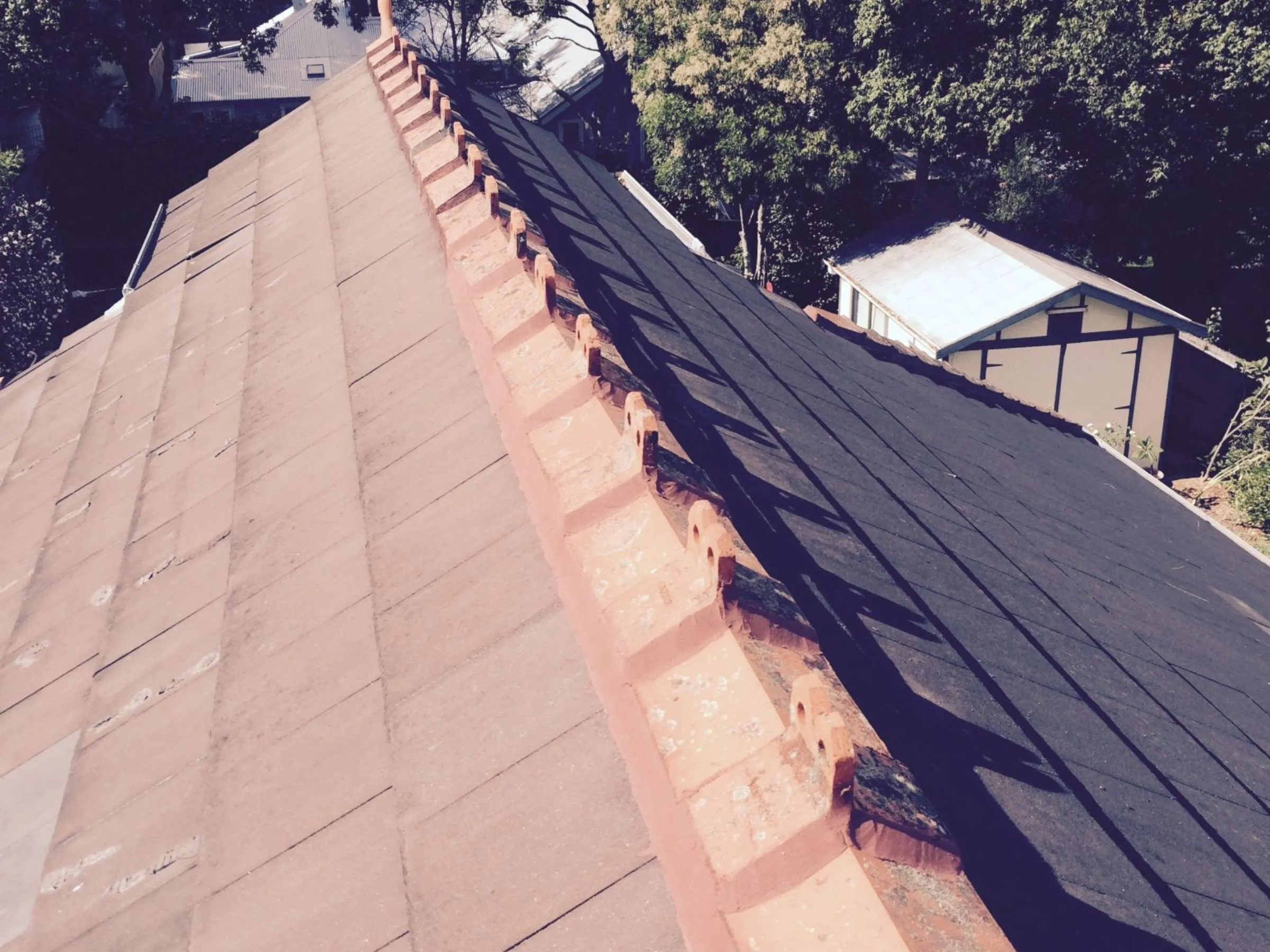Roof Mold & Algae can start your humid weather cause damage to your house, stop this now! When your roof appears dark or even greenish in certain areas, that is quite a red flag. The warm and wet places are favorites of mold and algae. If you live where it’s humid, your roof is at risk.
Don’t worry. We will teach you how to prevent this issue at an early stage and maintain your roof as a clean and healthy one. These tips are easy to follow, even if you’re not a roofing expert. Let’s dive in!
Why Do Mold and Algae Grow on Roofs?
Mold and algae prefer damp, warm and shady places. The humid locations provide them with the ideal residence in the form of roofs.
Here’s why they grow:
-
Humidity: Lots of moisture in the air means more wet spots on your roof.
-
Shade: If trees hang over your roof, they block sunlight. That shade helps mold and algae grow.
-
Leaves and Dirt: When debris sits on your roof, it traps water. That’s a big “Welcome” sign for mold.
Not only do these organisms make your roof ugly, they also have the potential of destroying your shingles to end up in your walls and decreasing the value of your home.
What Are the Signs of Roof Mold and Algae?
Want to spot the problem early? Look for these signs:
-
Black streaks on your roof
-
Green patches or fuzzy spots
-
A musty smell in your attic
-
Roof shingles curling or lifting
-
Water stains inside your house
If you see any of these, you need to act fast to prevent roof mold & algae in humid climates.
Why You Should Stop Roof Mold and Algae Now
Letting mold and algae grow can cost you a lot. Here’s why it’s better to stop them early:
-
Protects your health: Mold can cause breathing problems.
-
Saves money: Fixing a moldy roof is expensive.
-
Keeps your home looking nice: Algae makes your roof look dirty and old.
-
Stops leaks: Mold can damage your roof’s layers and lead to leaks.
Stopping mold early helps you prevent roof mold & algae in humid climates and avoid big repair bills later.
Step-by-Step: How to Prevent Roof Mold & Algae in Humid Climates
You don’t need to be a roofer to do this. Just follow these steps.
1. Keep Your Roof Clean
-
Remove leaves, twigs, and dirt often.
-
Clean your roof at least twice a year.
-
Use a leaf blower or soft brush—not hard scrubbing.
Tip: Cleaning helps dry your roof faster after rain.
2. Trim Nearby Trees
-
Cut back tree branches hanging over your roof.
-
Let sunlight reach your shingles.
-
Sunlight helps dry your roof and kills mold.
3. Clean Your Gutters
-
Clogged gutters cause water to sit on your roof.
-
Water buildup is perfect for mold growth.
-
Check your gutters every month, especially in rainy seasons.
4. Use Algae-Resistant Shingles
-
Some shingles have copper or zinc mixed in.
-
These materials stop mold and algae from growing.
-
If you’re replacing your roof, ask for these special shingles.
5. Install Zinc or Copper Strips
-
These go along the top ridge of your roof.
-
When it rains, tiny bits of zinc or copper wash down.
-
That stops mold and algae from growing.
Fun fact: Mold hates metal like copper and zinc!
6. Use a Roof Mold Cleaner
-
Use gentle roof-safe cleaners, not harsh bleach.
-
Spray the cleaner, let it sit, then rinse with water.
-
Don’t use pressure washers—they can break shingles.
Best Cleaners to Use
Here are a few types you can use safely:
-
Eco-friendly roof sprays
-
Oxygen bleach-based cleaners
-
Store-bought algae removers
Always follow the label and wear gloves when using cleaners.
How Often Should You Clean Your Roof?
-
Twice a year is a good start.
-
After big storms or heavy rain, check your roof.
-
If you live in a super humid place, clean more often.
Making this a habit helps you prevent roof mold & algae in humid climates before it spreads.
Should You Hire a Roof Cleaner?
If you’re scared of heights or don’t have the right tools, call a pro.
A professional can:
-
Clean your roof safely
-
Spot problems you can’t see
-
Use stronger tools and treatments
Tip: Ask if they offer mold prevention treatments too.
What to Avoid When Cleaning Your Roof
-
Don’t use a pressure washer—it can break your roof.
-
Don’t use harsh bleach—it can kill your plants and damage paint.
-
Don’t ignore black streaks—they won’t go away on their own.
Prevent Mold From Inside Your House Too
Humidity inside your home can creep up to your roof.
Do this to help:
-
Use fans in the bathroom and kitchen.
-
Open windows often to let air flow.
-
Fix leaks in your ceiling or attic.
Keeping your whole home dry helps you prevent roof mold & algae in humid climates more easily.
Extra Tips for Humid Areas
If you live near the beach, in a rainforest zone, or in the tropics, try these:
-
Check your roof monthly.
-
Install roof vents to let air out.
-
Paint your roof with mold-resistant coating.
-
Use a dehumidifier in the attic.
Even in the most humid places, these tips can save your roof!
What Happens If You Ignore the Problem?
Here’s what can go wrong:
-
Your roof gets weaker.
-
Leaks form and damage your ceilings.
-
You pay for a full roof replacement.
-
Your home looks dirty and uncared for.
But with regular care, you can easily prevent roof mold & algae in humid climates and avoid all these problems.
Simple Checklist: Stop Roof Mold Fast
Use this to stay ahead:
- Clean roof every 6 months
- Trim trees around the house
- Check gutters after heavy rain
- Look for black or green spots
- Use mold-killing roof spray
- Consider algae-resistant shingles
- Hire help if needed
Print this list and stick it on your fridge or toolbox!
Final Thoughts: Keep Your Roof Mold-Free
To prevent roof mold & algae in humid climates, you don’t need fancy gear or deep knowledge. Just clean, check, and take small steps regularly.
Remember:
-
Mold and algae love damp places.
-
Your roof is their favorite spot in humid areas.
-
You can fight them off with sunshine, airflow, and smart cleaning.
Take care of your roof now, and it will take care of you later.


